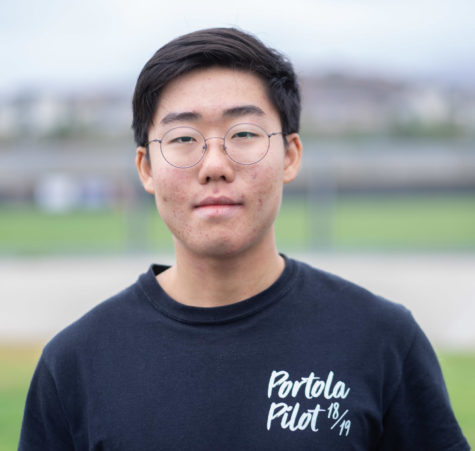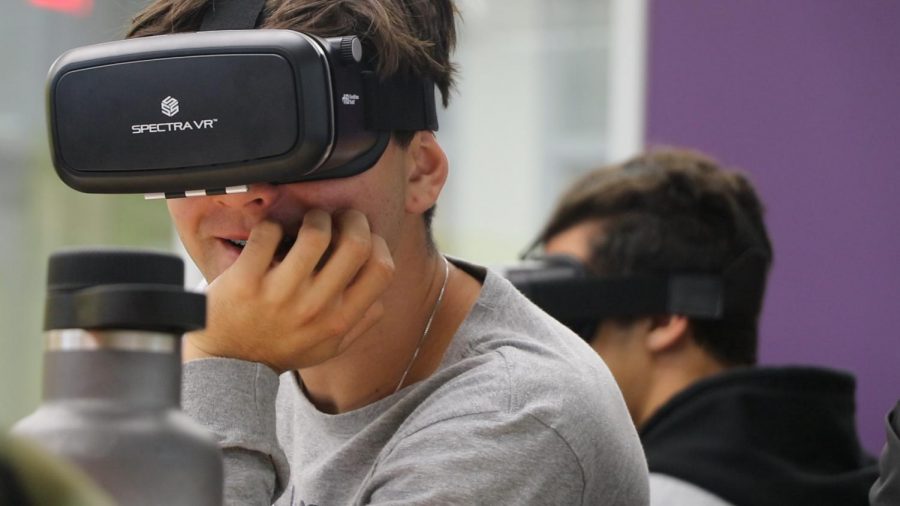Virtual Reality Enhances Learning in the Social Studies Classroom
Photo Courtesy of Amanda Cramer
Senior Victor Loyola smiles as he explores different environments through the VR headset without leaving his seat. Among 8-to-17-year-olds who own virtual reality technology, 33% use the device for exploring environments, while 22% use it to learn something, according to a survey by Common Sense Media.
Virtual reality (VR) is an innovative tool that allows a person with the right equipment to transcend the limitations of travel and time. After Portola High won the Irvine Public Schools Foundation’s Mega Grant in February 2019 for VR equipment, the social studies department, among several other departments, has utilized the benefits of VR by incorporating the technology in their lessons to enhance learning and allow students to gain a deeper understanding of historical events from a near first-hand perspective.
“[I used VR] for the Industrial Revolution…I wanted students to get an idea of the transition from agriculture to industrialization,” social studies teacher Heidi Martasian said. “I wanted my students to see what those machines looked like….Definitely [the students] were super into it, putting on the headsets and, ‘Ahhhhh.”
The use of VR offers a unique opportunity to step back in time and visualize specific historical moments that a student would only read about in the confines of a textbook.
“Through the museum tour, we were able to see factories and saw how people used to mine back in the day,” freshman Amara Trias said. “I thought it was an interesting experience because I haven’t done anything like that in any of my history classes. I felt more involved in the activities because you actually get to see with your own eyes what was happening.”
Tour options can be made available through either computer-generated imagery or with 360-degree cameras. These tours allow students to visit certain monuments around the globe. Modern World History is specifically looking to visit the Holocaust museum in Germany later in the year.
“I am also writing a grant right now to try to go to Japan and Hawaii to see some historic World War I sites with the idea that I would take some 360-degree photos to then use for tours next year,” Martasian said. “Right now, there are not a lot of options tour-wise on Google, but hopefully, as more and more people use it, there will be more options”
With the use of VR, students have the ability to step on the front-lines of World War I, and possibly even experience some of what it was like to serve as a soldier in the trenches. They can see the struggles that these soldiers experienced and better understand and empathize with them.
“For example, if you are learning about Rome, you can’t really see what it’s like through books, but you could do that with VR,” freshman Jack Qiu said. “I think VR will help students explore in history classes what it was like back then and they could look around closeup in the details instead of just reading. Students will be more engaged in what’s going on, and they might learn more details.”
Your donation will support the student journalists of Portola High School. Your contribution will allow us to purchase equipment and cover our annual website hosting costs.

Maya Sabbaghian is one of two 2019-2020 Managing Editors. A staff member since 2016, Maya has previously served as a 2017-2018 Editor-in-Chief, and as...

Ki Joon Lee is your 2019-2020 Sports Editor. On his third year with the Portola Pilot, he is excited to deliver sports news and feature amazing Bulldog...




